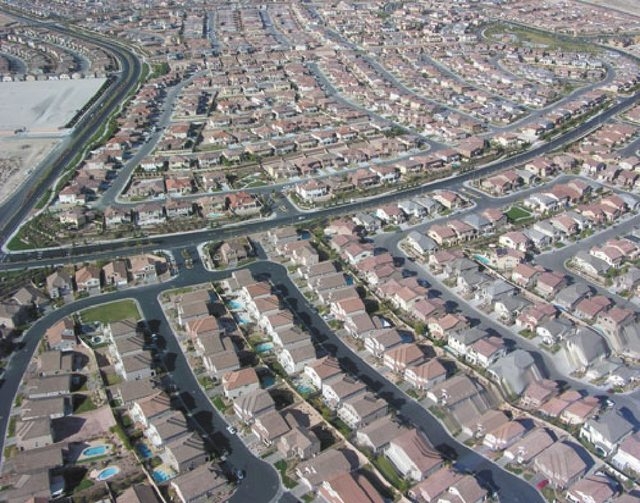Nevada housing stability earns C grade from state department

By one measure, at least, Nevada’s merely average.
And that’s not a bad thing.
The state Department of Business &Industry gave the Silver State a C on its third quarter Housing Stability Index. That grade might not overwhelm you, but it shows steady progress: The index earned a C- in the second quarter, and a D+ in the third quarter of 2012. In fact, it was the highest index performance since January 2007, before the recession began.
A C grade shows an “average-quality market,” the department said in its Tuesday analysis.
Nine out of 12 index measures improved in the quarter. Most notably, the share of sales to investors slipped to 44.6 percent, down from 54.2 percent in the second quarter and 48.6 percent a year earlier. Plus, resale housing inventory jumped to 4.7 months, up from 4.4 months a quarter earlier, though still below a balanced market rate of six months.
The state also saw a big drop in its share of under-water mortgages. In all, 39.3 percent of Nevadans owed more on their home than it was worth in the third quarter. That compared to 47.5 percent in the second quarter, and 59.4 percent in the third quarter of 2012.
And higher interest rates helped move mortgage costs to 22.7 percent of the average wage. That was up from 18.9 percent a quarter ago, and 16.4 percent from a year earlier, but it’s not a trend that concerns economists. It just means housing expenses are more in line with what locals earn on the job, the report said.
Still, Nevada has its housing drags.
The share of borrowers who are 90 days or more behind on their mortgage payment stayed high at 8.4 percent. And the ratio of home loans to employment was 42.7 percent, down from 43.8 percent in the second quarter and 47.1 percent in the third quarter of 2012. Shrinkage in the percentage of locals with financed homes hints that residents are either more cautious about buying or unable to qualify for a loan.
Although the report pointed mostly to gains, the department’s analysis said the Homeowners’ Bill of Rights, which took effect Oct. 1, and still-high delinquencies could affect future housing stability.
In other Tuesday housing statistics, the U.S. Census Bureau released its latest data on homeownership rates and vacancies. The bureau said 2.4 percent of owned homes in the Las Vegas Valley were vacant in the third quarter, down from 3.3 percent in the second quarter and 3.5 percent in the third quarter of 2012. The city’s share of empty homes peaked at 5.5 percent in the fourth quarter of 2011.
Also, the valley’s homeownership rate averaged 54.8 percent in the third quarter, up from 51.1 percent a year earlier, but down from a post-recession high of 57.8 percent in the first quarter of 2010.
Contact reporter Jennifer Robison at jrobison@reviewjournal.com. Follow @J_Robison1 on Twitter.